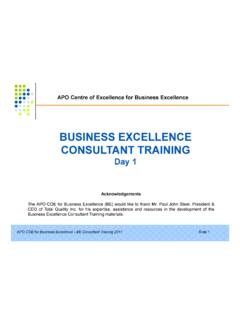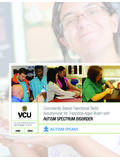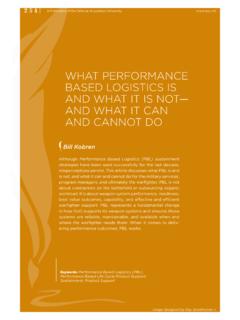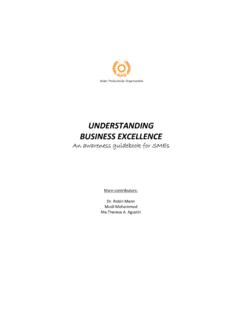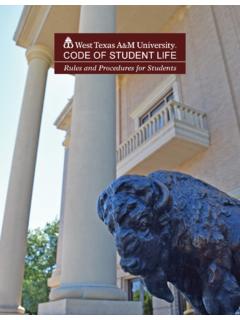Transcription of Disaster Preparedness White Paper - ACHNE
1 Disaster Preparedness White Paper for community /Public Health Nurs ing Educators Prepared by Association of community Health Nurs ing Educators ( ACHNE ). Task Force on Disaster Preparedness Sandra Kuntz, PhD, CNS-BC (Chair). Montana State University Pamela Frable, ND, RN. Texas Christian University Kristine Qureshi, DNSc, CEN, RN. University of Hawaii Manoa Linda Strong, EdD, RN. Sacred Heart University January, 2008. 1. FORWARD. The Association of community Health Nursing Educators ( ACHNE ) has developed a number of documents designed to delineate the scope and function of community /public health nursing educators, researchers, and practitioners. In response to societal issues, increased emphasis on Disaster Preparedness in nursing and public health, and requests from partner organizations to contribute to curriculum development endeavors regarding Disaster Preparedness , the ACHNE Disaster Preparedness Task Force was appointed in spring 2007 for the purpose of developing this document.
2 Task Force members developed an earlier draft of the document in summer and fall 2007, input was solicited and received from ACHNE members in fall 2007, and the document was approved and published in January 2008. The members of ACHNE extend their appreciation to the members of the Emergency Preparedness Task Force for their efforts: Pam Frable, ND, RN; Sandra Kuntz, PhD, CNS-BC. (Chair); Kristine Qureshi, DNSc, CEN, RN; Linda Strong, EdD, RN. This White Paper is aimed at meeting the needs of community /public health nursing educators and clarifying issues for the nursing and public health communities. ACHNE is committed to promotion of the public's health through ensuring leadership and excellence in community and public health nursing education, research, and practice. Derryl Block, President 2006-2008.
3 Joyce Splann Krothe, President Elect 2006-2008. 2. Disaster Preparedness White Paper for community /Public Health Nursing Educators Preface Responding to sudden and emerging health threats from natural, intentional, or technological disasters challenges all nurses including those in the community /public health sector. The Association of community Health Nursing Educators ( ACHNE ), guided by its mission to promote the public's health by ensuring leadership and excellence in community and public health nursing education, research, and practice (Association of community Health Nursing Educators, 2007), convened a Task Force in Spring 2007 to: (a) identify the leadership role of community /public health nursing educators in Disaster Preparedness education and (b) suggest possible essential elements for Disaster Preparedness in undergraduate nursing curricula in the United States ( ).
4 Because community /public health nursing courses are delivered to undergraduate students in a variety of formats throughout the country, the Task Force, in addition to addressing the two ACHNE directives, has developed an Annotated Resource Guide (see Appendix A) to assist faculty and others locate pertinent Disaster curricular resources. Introduction/Background community /public health nurses (C/PHNs) support the mission of public health to carry out, society's interest in assuring conditions in which people can be healthy (Institute of Medicine, 1988, p. 7). This focus targets populations and communities and includes respond(ing) to disasters and assist(ing) communities in recovery (Public Health Functions Steering Committee, 1994). Although the Disaster objective has received increased attention following the events of September 2001, C/PHNs have historically played a critical role in Disaster response activities in the community (American Red Cross, 2007a; Dock & Pickett, 1922).
5 In addition, C/PHN. educators have long provided Disaster education to all levels of nurses including students (undergraduate and graduate) and professional nurses in population-focused public health nursing practice. Although all nurses worldwide should possess basic competencies for responding to a Disaster (International Nursing Coalition for Mass Casualty Education [INCMCE], 2003), C/PHNs should additionally be grounded in emergency Preparedness competencies for pub lic health workers (Columbia University School of Nursing, Center for Disease Control and Prevention, &. Association of Teachers of Preventive Medicine, 2002) and public health nurses (Polivka et al., 2008; Stanley, 2005). Public health nurse educators and advanced practice community /public health clinical nurse specialists along with their practice partners are uniquely positioned to collaborate with leaders of the community to develop and implement systems level Preparedness and response plans for populations--before, during, and after an event (Association of State and Territorial Directors of Nursing, 2007; Natio nal Organization of Nurse Practitioner Faculties, 2007).
6 Emergent events including sudden mass casualty incidents, unfolding infectious disease outbreaks, or evolving environmental disasters require interdisciplinary response skills of all health care providers throughout the community (Gebbie & Qureshi, 2006). A full and timely 3. response depends on a competent workforce prepared for both acute and mass casualty needs of the impacted population as well as the long term needs of the community (Weiner, 2006). Preparing the coming workforce to function safely, effectively, and with a commitment to contribute to a Disaster response at a future worksite or as a volunteer requires both curricular planning, faculty leadership, and role modeling. Five Assumptions Regarding the Leadership Role of C/PHN Educators in Disaster Preparedness Education Assumption 1: Disaster Preparedness requires an organized, multi-sector approach.
7 Disaster Preparedness is comprised of knowledge, skills, and values that are situated in the universal commitment of nursing as a united profession, to provide illness care, disease and disability prevention, and health promotion to individuals, families, and communities. The contribution and leadership role of C/PHN educators is derived from the public health core functions and essential public health services including (a) assessment of community assets and needs; (b) assurance of competent entry-level practitioners prepared for basic and advanced practice through undergraduate and graduate nursing education programs; and, (c) advocacy for populations through contributions to policy development. The C/PHN educator's skills related to collaboration and coalition development help to build bridges between community practice settings and the educational environment.
8 Assumption 2: C/PHN educator's practice is based on professional ethics and established standards of practice and professional performance. The leadership role of C/PHN educators related to Disaster Preparedness is established in at least three guiding documents. The Code of Ethics for Nurses (American Nurses Association, 2001), advises that: the nurse owes the same duties to self as to others, including the responsibility to preserve integrity and safety, to maintain competence, and to continue personal and professional growth. (p. 18). This ethical statement reinforces the importance of self-care, safety, and lifelong learning. The Principles of Ethical Practice of Public Health supports values inherent in advocacy, respect for human diversity, and policies developed with input from community members (American Public Health Association, 2001).
9 Finally, the new Public Health Nursing: Scope and Standards of Practice (American Nurses Association, 2007), outlines professional performance standards which specifically relate to Disaster Preparedness activities. Standard 10. calls for the public health nurse to establish collegial partnerships .. and contribute to the professional development of peers, students, colleagues, and others. Standards 11-14 and 16. address collaboration, ethics, research, resource utilization, and advocacy. Standard 15 identifies the professional leadership role and specifically directs the public health nurse to function as a public health team leader in emergency Preparedness and response situations.. (pp. 31-38). Assumption 3: C/PHN educators serve as leaders in the development, recommendations, and/or integration of Disaster content in the curriculum.
10 Historically, most Disaster education curricular content in baccalaureate programs has been embedded in community /public health nursing courses. Leading C/PHN textbooks have long included a chapter or section on community health nursing's role in Disaster Preparedness (Allender & Spradley, 2005; Clark, 2008; Lundy & Janes, 2001; Smith & Maurer, 2000;. Stanhope & Lancaster, 2004). However, the threat of overt and covert mass casualty events in an 4. era of global unrest, increased seismic, weather-related, and other natural disasters, and an increased awareness of the long-term psychosocial impact of Disaster in communities requires a macro-approach to Disaster education. To achieve this outcome the C/PHN educator articulates the need for Disaster education in the curriculum, determines the perceptions of faculty colleagues towards Disaster education, measures nursing faculty readiness and motivation to engage in curricular integration for inclusion of Disaster Preparedness content and skills, and supports the distribution of both general and specialty Disaster competencies to interested faculty.


